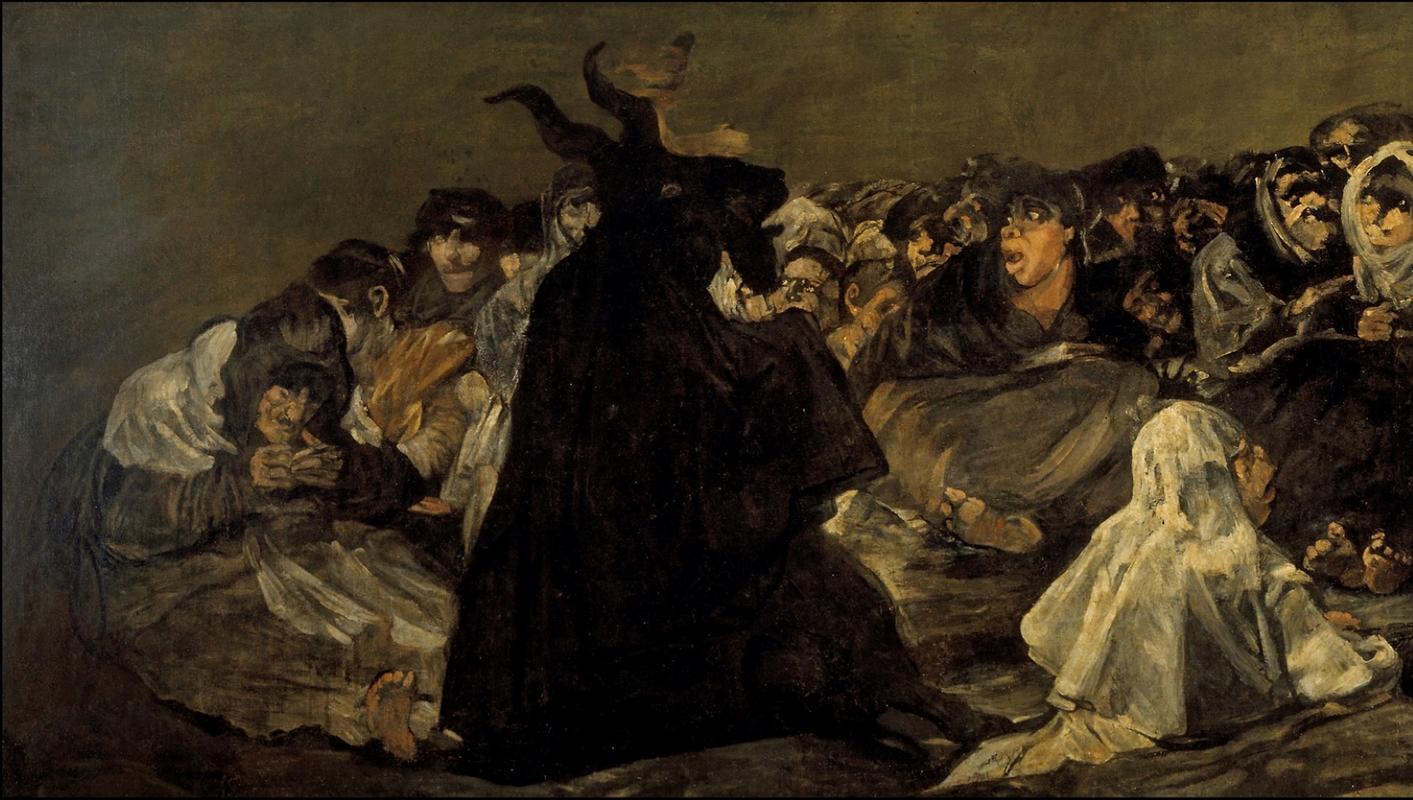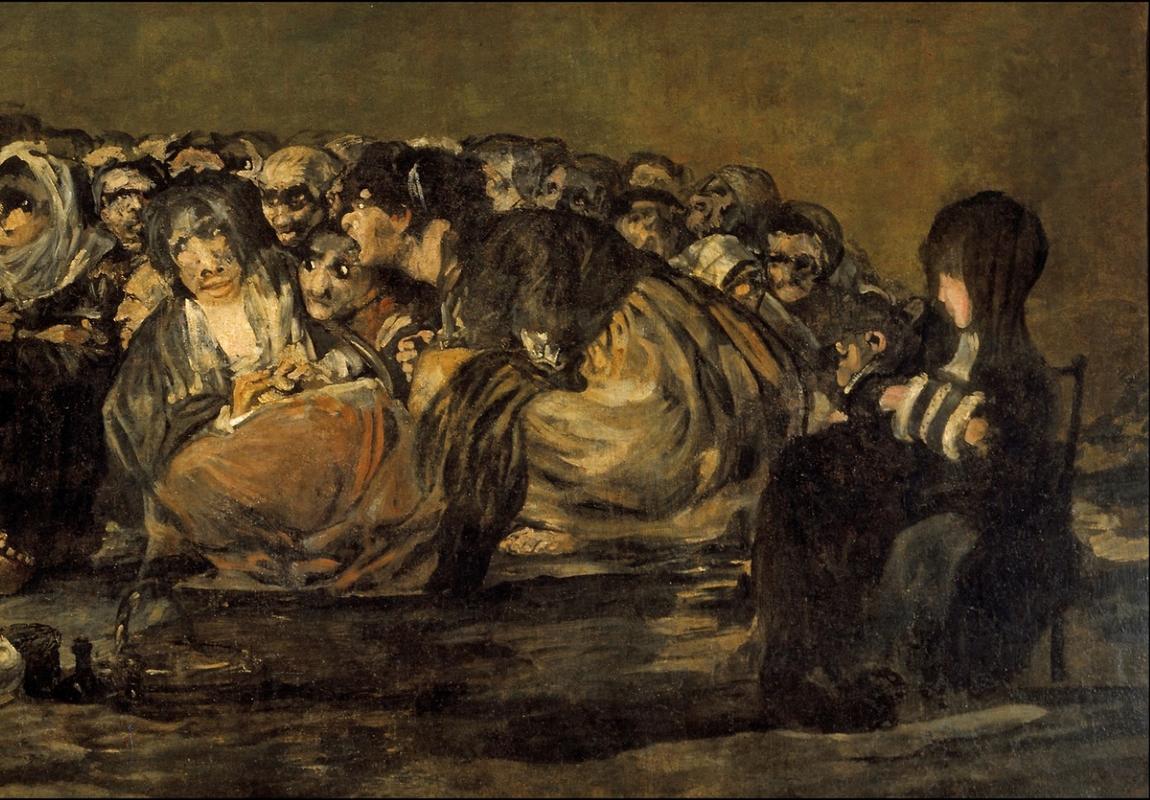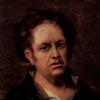More about Witches' Sabbath

Sr. Contributor
Francisco Goya's Witches’ Sabbath (not to be confused with the piece done over two decades later called Witches’ Sabbath (The Great He-Goat)), is one of six works with a focus on the supernatural Goya painted for the Duchess of Osuna.
Francisco Goya didn’t believe in the supernatural, but he often drew from it to reshape and reveal the true evils that haunted him - evils that stemmed from humans devoid of mystical influence, the only sort of being Goya ever claimed to fear.
Goya was somewhat close with the Duchess and her family before this commission, which was of rather eclectic taste at the time. The Duke and Duchess of Osuna were patrons of Goya for over thirty years. Well before they wanted to request dark, witchy scenes to decorate their country house Palacio de Alameda, Goya painted a rather sweet family portrait of them with all their children, among other works.
As for why witches, Goya, through his supernatural subjects, showcased satire about the superstitious society around him. In this instance, he was likely satirizing the Spanish Inquisition, which wouldn’t be abolished for another decade, and criticizing the Church for encouraging superstition. More specifically, Goya was commenting on the lingering belief in witchcraft that led to thousands of lives lost in witch hunts two centuries prior.
Around the time of this commission, Goya also created eighty prints called Los Caprichos which also featured depictions of witchcraft, created toward the same purpose. One title is particularly apt: The Sleep of Reason Produces Monsters. Goya wanted the awful history to stay in the past.
As for the start of this specific piece and the five others in the commission, a court document from the Basque County witch trials of 1609-11 called Auto de Fe de la Ciudad de Logroño inspired, and likely enraged Goya. Though it didn’t get an official second publication until 1812, and this piece was created in 1798, the parallels between his paintings and the imagery described are rather telling. Since Goya was friends with the author, he probably got an early read.
The events and satanic rituals described in the document were said to have happened in a place called El Aquelarre, the Spanish title of this piece, which translates to “the coven.” I imagine there were aristocrats in high society who read all the vivid details with a gruesome fascination, like people nowadays watching the Saw sequels. Goya appropriated these images as a way of rejecting them and challenging superstitious beliefs and the hatred and prejudice said thinking could brew.
What makes the court document so appalling is that the summation of accusations actually does read as graphic as a Saw sequel, while the whole of it is written with no awareness of the true tragedy. Auto de fe, the name the Inquisition gave the trials, translates to “act of faith” and when the accused are taken to the authorities they refer to it as being “relaxed.” It’s not hard to see why Goya was compelled to use it as a source for his satire.
To spare you from specifics, this piece and the five others, including Witches’ Flight, give you a restyled, and more palatable idea of the trials, with Saturn Devouring One of His Sons also thrown in as a final interpretation - a pretty horrific one, at that.
Sources
- “ ‘El, Aquelarre’ .” SpanishDict. Accessed September 21, 2022. https://www.spanishdict.com /translate/el%2Caquelarre.
- “Auto-Da-Fé.” Encyclopædia Britannica. Encyclopædia Britannica, inc. Accessed September 21, 2022. https://www.britannica.com/topic/auto-da-fe.
- Carr-Gomm, Sarah. Francisco Goya. New York: Parkstone International, 2011.
- Davenport, Harper. “Witchcraft and Superstition in Goya's Los Caprichos.” Smith College Museum of Art, July 3, 2019. https://scma.smith.edu/blog/witchcraft-and -superstition-goyas-los-caprichos-0
- “The Duke and Duchess of Osuna and Their Children.” Museo Nacional del Prado. Accessed September 21, 2022. https://www.museodelprado.es/en/the-collection/art-work/the-duke-and-du….
- Fernández-Salvador, Carmen. “The Witches of Goya .” Athanor 16 (May 1, 2018).
- Hemphill, R E. “Historical Witchcraft and Psychiatric Illness in Western Europe.” Proceedings of the Royal Society of Medicine 59, no. 9 (1966): 891–902. https://doi.org/10.1177 /003591576605900947.
- “Los Caprichos.” University of Glasgow, August 2006. https://www.gla.ac.uk/myglasgow/ library/files/special/exhibns/month/aug2006.html.
- Milam, Jennifer Dawn, and Melissa Hyde. Women, Art and the Politics of Identity in Eighteenth-Century Europe. Abingdon, Oxon: Routledge, Taylor and Francis Group, 2016.
- Milam, Jennifer Dawn. Historical Dictionary of Rococo Art. Lanham: The Scarecrow Press, Inc., 2011.
- Mongaston, Juan de. “Auto De Fe De Logroño.” biblioteca gonzalo de berceo. Accessed September 21, 2022. http://www.vallenajerilla.com/berceo/gildelrio/autodefe.htm.
- “Spanish Inquisition.” Encyclopædia Britannica. Encyclopædia Britannica, inc. Accessed September 21, 2022. https://www.britannica.com/topic/Spanish-Inquisition.
- “Witches as Metaphors: Francisco Goya's Image of the Witch.” Salem Witch Museum, May 21, 2020. https://salemwitchmuseum.com/2020/05/21/witches-as-metaphors-francisco -goyas-image-of-the-witch/.
Featured Content
Here is what Wikipedia says about Witches' Sabbath (The Great He-Goat)

Witches' Sabbath or The Great He-Goat (Spanish: Aquelarre or El gran cabrón) are names given to an oil mural by the Spanish artist Francisco de Goya, completed sometime between 1820 and 1823. It depicts a Witches' Sabbath and evokes themes of violence, intimidation, ageing and death; Satan hulks in the form of a goat in moonlit silhouette over a coven of terrified old witches. Goya was then around 75 years old, living alone and suffering from acute mental and physical distress.
The work is one of the fourteen Black Paintings that Goya applied in oil on the plaster walls of his house, the Quinta del Sordo. The series was completed in secret: he did not title any of the works or leave a record of his intentions in creating them. Absent of fact, Witches' Sabbath is generally seen by some art historians as a satire on the credulity of the age, a condemnation of superstition and the witch trials of the Spanish Inquisition. As with the other works in the group, Witches' Sabbath reflects its painter's disillusionment and can be linked thematically to his earlier etching The Sleep of Reason Produces Monsters as well as the Disasters of War print series, another bold political statement published only posthumously.
Around 1874, some fifty years after his death, the plaster murals were taken down and transferred to canvas supports. Witches' Sabbath was much wider before transfer – it was the broadest of the Black Paintings. During the transfer about 140 cm (55 in) of the painting were cut from the right-hand side.
Check out the full Wikipedia article about Witches' Sabbath (The Great He-Goat)













